Tag Archive: Carol Sanford
August 9, 2012
“Ninety per cent of the world’s woe comes from people not knowing themselves, their abilities, their frailties, and even their real virtues. Most of us go almost all the way through life as complete strangers to ourselves – so how can we know anyone else?”
– Sydney J. Harris
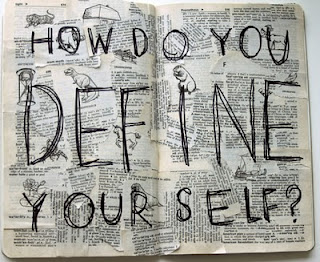
Recently I was in a conversation with an acquaintance who is a real estate agent. We started bantering about houses and communities that would fit our values and lifestyle/family goals. At a certain point, she said, “You know, we can dream all we want, but as we like to say in real estate, ‘buyers are liars.'” In response to my baffled look, she added, “Most people think they know what they want, but I find you really have to take people out into the field, ask a lot of questions, show them a bunch of options, and see how they respond.” Turns out people often end up in a somewhat or completely different place from their originally stated aspirations. Read More
June 20, 2012

Over the past couple of years, I have learned much from Carol Sanford, organizational consultant and author of The Responsible Business. This includes a deeper understanding of the word “responsibility.” Often this term has a burdensome association with it, as in, “with great freedom comes great responsibility.” Here are a couple of definitions that come up when you Google the term:
- The state or fact of having a duty to deal with something.
- The state or fact of being accountable or to blame for something.
Read More
April 6, 2012
“The most sustainable impact comes from our deriving meaning and then connecting that meaning to our purpose, to what we stand for, and to the contributions we make.”
-Dr. Monica Sharma

There is something about the invitation to health and wholeness and to talking about how to measure it that seems to be a real draw to our Whole Measures workshop, which we offer jointly with the Center for Whole Communities. I can see it in the eyes of many participants as they walk into the room – “Tell us how!” And there is a bit of a disruptive experience that occurs when we let people know it is not so formulaic. One of my favorite quotes comes from my mentor Carol Sanford who has said, “Best practice obliterates essence,” and I think it really applies to what we are talking about here. Read More
January 12, 2012
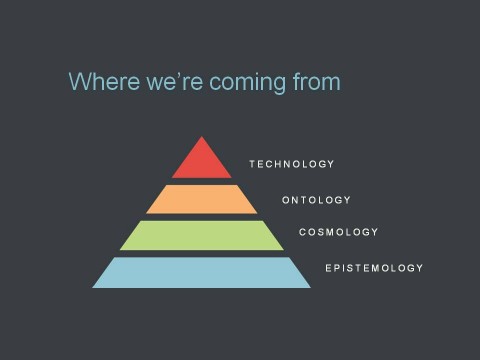
Next Tuesday, my colleague Gibran Rivera and I are excited to lead a webinar hosted by our friends at the Leadership Learning Community called “If You Till It They Will Come: Nurturing Collective Leadership.” The above slide is a bit of a sneak peak, and certainly one of the headier, nonetheless important, elements we will cover. The idea behind this graphic comes from the work of Carol Sanford, who has highlighted the fact that our leadership and change methodologies are always grounded in an underlying belief system about what we hold to be true about the world and humanity. Not being aware of or transparent about this can get us into difficulty when we are mixing and matching techniques/methods that may contradict one another, or when we are not operating from the same system of beliefs as others. So here is how we are tracing the roots of our approach to cultivating collective leadership for social change: Read More
August 9, 2011
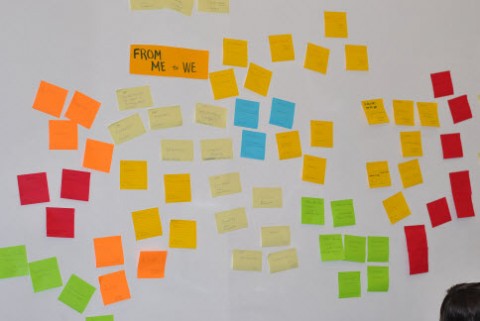
|Photo by cambodia4kidsorg|http://www.flickr.com/photos/cambodia4kidsorg/5483312300/in/photostream|
For the past couple of years I have been involved in varying degrees and for varying lengths of time with a number of efforts around the New England region to build city and state-wide movement and infrastructure to achieve greater impact around a number of different issue areas. Whether or not these efforts have expressly used the word “network,” (all embrace the core concept of multi-stakeholder collaboration), they are all trying to create, develop, or reinforce more inclusive, distributed, and efficient means of achieving significant systemic change.
Ultimately each of these efforts has steered clear of adopting an exact replica of a network structure that is working elsewhere, implicitly understanding my friend and mentor Carol Sanford’s mantra that “best practice obliterates essence.” Instead, within and across these efforts they have been articulating some common “design principles” that guide their emergent and evolving structure. Among these are some form of the following: Read More
June 22, 2011
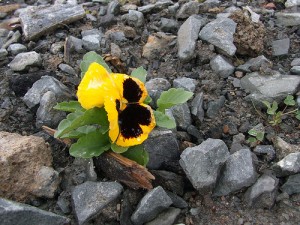
|Photo by daisybush|http://www.flickr.com/photos/dennajones/4951125886|
I am very much looking forward to my upcoming cafe conversation with Carol Sanford, author of the recently released The Responsible Business. Someone once said, “What Deepak Chopra and Steven Covey are to the individual, Carol Sanford is to the whole organization.” I have considered her as a mentor at a distance, ever since getting introduced to her work by fellow Arlington resident Bill Reed. What I have come to appreciate about both Carol and Bill is their incisive emphasis on regenerative design and capacity building as they help people to understand that they are not separate from but a part of “the environment.” In a recent blog post, Carol shows how our anthropocentric views have not only put us at the center of things but also apart from them, in ways that are increasingly detrimental. Even with the best of intentions to “do good,” there is often a division between provider and other (think what is implied in “giving back” or “helping the environment”), as opposed to “working to evolve a living order” of which we are intimately a part.
What follows is an excerpt from Carol’s recent blog post “Sustainability: Moving From ‘Less Harm’ to ‘Deep Good'” (for the entire post follow this link). Read More
June 22, 2011

|Photo by daisybush|http://www.flickr.com/photos/dennajones/4951125886|
I am very much looking forward to my upcoming cafe conversation with Carol Sanford, author of the recently released The Responsible Business. Someone once said, “What Deepak Chopra and Steven Covey are to the individual, Carol Sanford is to the whole organization.” I have considered her as a mentor at a distance, ever since getting introduced to her work by fellow Arlington resident Bill Reed. What I have come to appreciate about both Carol and Bill is their incisive emphasis on regenerative design and capacity building as they help people to understand that they are not separate from but a part of “the environment.” In a recent blog post, Carol shows how our anthropocentric views have not only put us at the center of things but also apart from them, in ways that are increasingly detrimental. Even with the best of intentions to “do good,” there is often a division between provider and other (think what is implied in “giving back” or “helping the environment”), as opposed to “working to evolve a living order” of which we are intimately a part.
What follows is an excerpt from Carol’s recent blog post “Sustainability: Moving From ‘Less Harm’ to ‘Deep Good'” (for the entire post follow this link). Read More
April 27, 2011
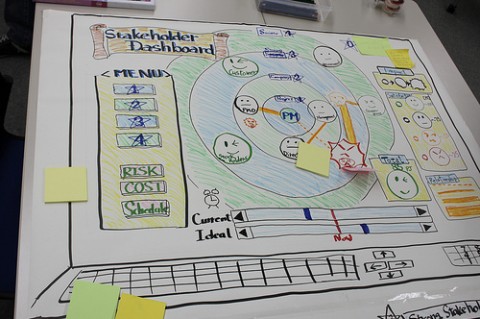
|Photo by Robert Higgins|http://www.flickr.com/photos/37893534@N07/4779016818|
“Stakeholder” is a big word in our practice at IISC. When it comes to our collaborative change work, we take stakeholder analysis very seriously, in certain situations spending a few days to complete this critical task. The aim is generally to surface the names of those groups and individuals who as a sum total will help to ensure that we have the system represented in the room. What this means is pushing people, at times, into uncomfortable places to consider typically unheard voices and those they have outright resisted inviting to the table but without whom they could not hope to make the kind of change to which they aspire.
Typically we engage in a conversation with our clients and partners that asks them identify, in the context of some given change effort, those whose stakes are defined in the following ways: Read More
September 29, 2010

|Photo by Vincepal|http://www.flickr.com/photos/vincepal/2806832762|
I recently did work with an organization that had approached us with an interest in designing a retreat during which staff would consider options for embracing climate action and environmental organizing strategies as part of their efforts moving forward. In one of our early planning calls, I asked how this new direction made sense given where the organization had historically focused its resources (affordable housing, open space advocacy, community beautification), and the response was a very thoughtful, “That’s a good question.” Furthermore, I asked if there was anything they were planning on letting go of. Again, pregnant pause and . . . “That’s a good question.” And so began a very fruitful conversation, the upshot of which was an opening segment of the retreat that focused on developing a coherent frame for the organization that could more easily and sensibly integrate climate and environmental work. Read More







